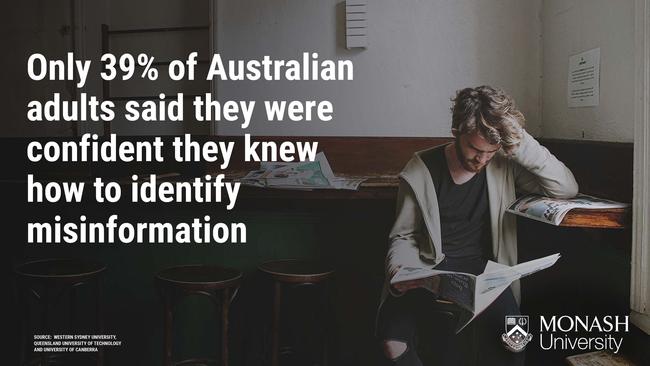The cost of misinformation in a changing climate
As extreme weather and the cost of energy dominates the headlines, knowing how to separate fact from fiction is more important than ever.

Hyperlocal
Don't miss out on the headlines from Hyperlocal. Followed categories will be added to My News.
Flooding to the north, cyclones to the west, raging fires and even snow down south – Australia is experiencing it all this summer.
And alongside extremes, we're experiencing some more subtle changes to the weather outside.
For example, the average daytime temperature during summer here in Gladstone is now around 1.5C warmer than it was just 55 years ago.

With all this wild weather comes an onslaught of coverage and debate around climate change and its solutions.
And an election in the not so distant future means there will be even more mixed messages competing for our attention.
The challenge here is sifting through the information – on social media, our TVs, online and in the paper – to separate fact from fiction.
So, how do you define fake news?
Disinformation is the deliberate spread of misleading information, crafted to deceive or manipulate us.
Misinformation, on the other hand, is when we pass along something that's false without meaning to.
So, both refer to spreading false information, but only disinformation is wrong on purpose.
Let's break down some controversial climate and energy-focussed topics that have emerged over the past couple of months.
Myth 1: Australia is on track to hit its 2030 climate goals
Context: The energy minister's annual climate change statement noted "emissions have fallen to 28.2 per cent below 2005 levels" and that Australia is "on track" to achieve a 43 per cent reduction by 2030.
Why this is misleading: Cherry Picking
Fact: Yes, Australia's emissions have gone down because land use practices have shifted.
But our primary emissions have hardly changed.
Net emissions, not accounting for land use, land-use change and forestry (LULUCF) have not significantly dropped since 2005.
Without LULUCF Australia's emissions have actually only dropped 1.7 per cent.
Myth 2: Climate models are extremely uncertain about the future
Context: Some claim climate models are unreliable because they show a range of possible futures, making them seem too uncertain.
Why this is misleading: Impossible Expectations
Fact: Climate models reliably forecast global warming and its potential impacts.
While different models give slightly different projections, they all show the same trend – temperatures will keep rising as greenhouse gases increase.
Most uncertainty comes from human actions, like how much we cut emissions, not from flaws in the science.
In fact, past climate models have been impressively accurate in forecasting temperature changes over decades.
Myth 3: Renewables will blow out energy costs, making nuclear a cheaper option
Context: Some claim that the push for renewables is making electricity more expensive, while nuclear would be a more affordable option.
Why this is misleading: Creative Accounting
Fact: Renewables remain the cheapest energy source.
Multiple studies, including by the CSIRO and AEMO, show that wind and solar combined with batteries are the most affordable way to power Australia's grid.
Nuclear plants take decades to build and might present a greater overall cost to Australia's electricity system.
Tips for spotting fishy information

1. Verify the source: Check if the news site or account is credible and if the author has the right qualifications.
2. Look for red flags: Wacky headlines, a weird web address, lots of capital letters, and poor grammar can indicate unreliable content.
3. Assess for bias: Social media content is tailored to you – be mindful of your biases and those of the content creator.
4. Compare with other sources: If a story is only being shared by unfamiliar or questionable sources, more sleuthing is needed.
In a world flooded with information, it's more important than ever to sift through the noise, so we can make informed decisions about the climate challenges ahead.
Want more information on how your climate is changing? Check out the last article in this series.
Amelia Pearson is the Operations Manager at the Monash Climate Change Communication Research Hub.
This column is part of a collaboration between Monash University and News Corp to deliver hyperlocal weather and climate information.

